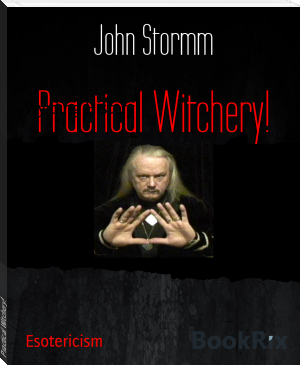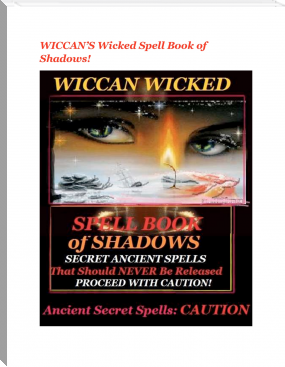Esoteric Christianity, or The Lesser Mysteries by Annie Besant (best 7 inch ereader TXT) 📖

- Author: Annie Besant
Book online «Esoteric Christianity, or The Lesser Mysteries by Annie Besant (best 7 inch ereader TXT) 📖». Author Annie Besant
What, then, is this change of substance in the materials used in the Eucharist? The idea that makes the object has been changed; in their normal condition bread and wine are food-stuffs, expressive of the divine ideas of nutritive objects, objects fitted for the building up of bodies. The new idea is that of the Christ nature and life, fitted for the building up of the spiritual nature and life of man. That is the change of substance; the object remains unchanged in its "accidents," its physical material, but the subtle matter connected with it has changed under the pressure of the changed idea, and new properties are imparted by this change. They affect the subtle bodies of the participants, and attune them to the nature and life of the Christ. On the "worthiness" of the participant depends the extent to which he can be thus attuned.
The unworthy participant, subjected to the same process, is injuriously affected by it, for his nature, resisting the pressure, is bruised and rent by the forces to which it is unable to respond, as an object may be broken into pieces by vibrations which it is unable to reproduce.
The worthy partaker, then, becomes one with the Sacrifice, with the Christ, and so becomes at one with also, united to, the divine Life, which is the Father of the Christ. Inasmuch as the act of Sacrifice on the side of form is the yielding up of the life it separates from others to be part of the common Life, the offering of the separated channel to be a channel of the one Life, so by that surrender the sacrificer becomes one with God. It is the giving itself of the lower to be a part of the higher, the yielding of the body as an instrument of the separated will to be an instrument of the divine Will, the presenting of men's "bodies as a living sacrifice, holy, acceptable unto God."[346] Thus it has been truly taught in the Church that those who rightly take part in the Eucharist enjoy a partaking of the Christ-life poured out for men. The transmuting of the lower into the higher is the object of this, as of all, Sacraments. The changing of the lower force by its union with the loftier is what is sought by those who participate in it; and those who know the inner truth, and realise the fact of the higher life, may in any religion, by means of its sacraments, come into fuller, completer touch with the divine Life that upholds the worlds, if they bring to the rite the receptive nature, the act of faith, the opened heart, which are necessary for the possibilities of the Sacrament to be realised.
The Sacrament of Marriage shows out the marks of a Sacrament as clearly and as definitely as do Baptism and the Eucharist. Both the outer sign and the inward grace are there. The material is the Ring--the circle which is the symbol of the everlasting. The Word of Power is the ancient formula, "In the Name of the Father, and of the Son, and of the Holy Ghost." The Sign of Power is the joining of hands, symbolising the joining of the lives. These make up the outer essentials of the Sacrament.
The inner grace is the union of mind with mind, of heart with heart, which makes possible the realisation of the unity of spirit, without which Marriage is no Marriage, but a mere temporary conjunction of bodies. The giving and receiving of the ring, the pronouncing of the formula, the joining of hands, these form the pictorial allegory; if the inner grace be not received, if the participants do not open themselves to it by their wish for the union of their whole natures, the Sacrament for them loses its beneficent properties, and becomes a mere form.
But Marriage has a yet deeper meaning; religions with one voice have proclaimed it to be the image on earth of the union between the earthly and the heavenly, the union between God and man. And even then its significance is not exhausted, for it is the image of the relation between Spirit and Matter, between the Trinity and the Universe. So deep, so far-reaching, is the meaning of the joining of man and woman in Marriage.
Herein the man stands as representing the Spirit, the Trinity of Life, and the woman as representing the Matter, the Trinity of formative material. One gives life, the other receives and nourishes it. They are complementary to each other, two inseparable halves of one whole, neither existing apart from the other. As Spirit implies Matter and Matter Spirit, so husband implies wife and wife husband. As the abstract Existence manifests in two aspects, as a duality of Spirit and Matter, neither independent of the other, but each coming into manifestation with the other, so is humanity manifested in two aspects--husband and wife, neither able to exist apart, and appearing together. They are not twain but one, a dual-faced unity. God and the Universe are imaged in Marriage; thus closely linked are husband and wife.
It is said above that Marriage is also an image of the union between God and man, between the universal and the individualised Spirits. This symbolism is used in all the great scriptures of the world--Hindu, Hebrew, Christian. And it has been extended by taking the individualised Spirit as a Nation or a Church, a collection of such Spirits knit into a unity. So Isaiah declared to Israel: "Thy Maker is thine Husband; the Lord of hosts is His name.... As the bridegroom rejoiceth over the bride, so shall thy God rejoice over thee."[347] So S. Paul wrote that the mystery of Marriage represented Christ and the Church.[348]
If we think of Spirit and Matter as latent, unmanifested, then we see no production; manifested together, there is evolution. And so when the halves of humanity are not manifested as husband and wife, there is no production of fresh life. Moreover, they should be united in order that there may be a growth of life in each, a swifter evolution, a more rapid progress, by the half that each can give to each, each supplying what the other lacks. The twain should be blended into one, setting forth the spiritual possibilities of man. And they show forth also the perfect Man, in whose nature Spirit and Matter are both completely developed and perfectly balanced, the divine Man who unites in his own person husband and wife, the male and female elements in nature, as "God and Man are one Christ."[349]
Those who thus study the Sacrament of Marriage will understand why religions have ever regarded Marriage as indissoluble, and have thought it better that a few ill-matched pairs should suffer for a few years than that the ideal of true Marriage should be permanently lowered for all. A nation must choose whether it will adopt as its national ideal a spiritual or an earthly bond in Marriage, the seeking in it of a spiritual unity, or the regarding it as merely a physical union. The one is the religious idea of Marriage as a Sacrament; the other the materialistic idea of it as an ordinary terminable contract. The student of the Lesser Mysteries must ever see in it a sacramental rite.
CHAPTER XIV.
REVELATION.
All the religions known to us are the custodians of Sacred Books, and appeal to these books for the settlement of disputed questions. They always contain the teachings given by the founder of the religion, or by later teachers regarded as possessing super-human knowledge. Even when a religion gives birth to many discordant sects, each sect will cling to the Sacred Canon, and will put upon its word the interpretation which best fits in with its own peculiar doctrines. However widely may be separated in belief the extreme Roman Catholic and the extreme Protestant, they both appeal to the same _Bible_. However far apart may be the philosophic Vedântin and the most illiterate Vallabhâchârya, they both regard the same _Vedas_ as supreme. However bitterly opposed to each other may be the Shias and the Sunnis, they both regard as sacred the same _Kurân_. Controversies and quarrels may arise as to the meaning of texts, but the Book itself, in every case, is looked on with the utmost reverence. And rightly so; for all such books contain fragments of The Revelation, selected by One of the great Ones who hold it in trust; such a fragment is embodied in what down here we call a Revelation, or a Scripture, and some part of the world rejoices in it as in a treasure of vast value. The fragment is chosen according to the needs of the time, the capacity of the people to whom it is given, the type of the race whom it is intended to instruct. It is generally given in a peculiar form, in which the outer history, or story, or song, or psalm, or prophecy, appears to the superficial or ignorant reader to be the whole book; but in these deeper meanings lie concealed, sometimes in numbers, sometimes in words constructed on a hidden plan--a cypher, in fact--sometimes in symbols, recognisable by the instructed, sometimes in allegories written as histories, and in many other ways. These Books, indeed, have something of a sacramental character about them, an outer form and an inner life, an outer symbol and an inner truth. Those only can explain the hidden meaning who have been trained by those instructed in it; hence the dictum of S. Peter that "no prophecy of the Scripture is of any private interpretation."[350] The elaborate explanations of texts of the Bible, with which the volumes of patristic literature abound, seem fanciful and overstrained to the prosaic modern mind. The play upon numbers, upon letters, the apparently fantastic interpretations of paragraphs that, on the face of them, are ordinary historical statements of a simple character, exasperate the modern reader, who demands to have his facts presented clearly and coherently, and above all, requires what he feels to be solid ground under his feet. He declines absolutely to follow the light-footed mystic over what seem to him to be quaking morasses, in a wild chase after dancing will-o'-the-wisps, which appear and disappear with bewildering and irrational caprice. Yet the men who wrote these exasperating treatises were men of brilliant intellect and calm judgment, the master-builders of the Church. And to those who read them aright they are still full of hints and suggestions, and indicate many an obscure pathway that leads to the goal of knowledge, and that might otherwise be missed.
We have already seen that Origen, one of the sanest of men, and versed in occult knowledge, teaches that the Scriptures are three-fold, consisting of Body, Soul, and Spirit.[351] He says that the Body of the Scriptures is made up of the outer words of the histories and the stories, and he does not hesitate to say that these are not literally true, but are only stories for the instruction of the ignorant. He even goes so far as to remark that statements are made in those stories that are obviously untrue,





Comments (0)